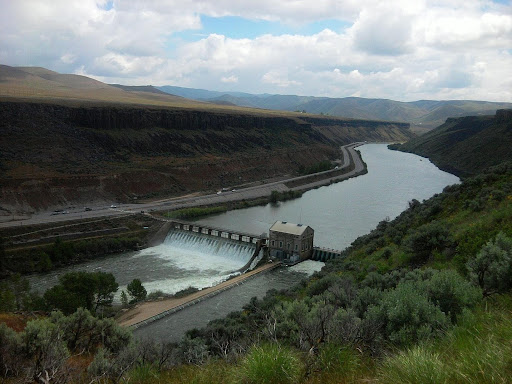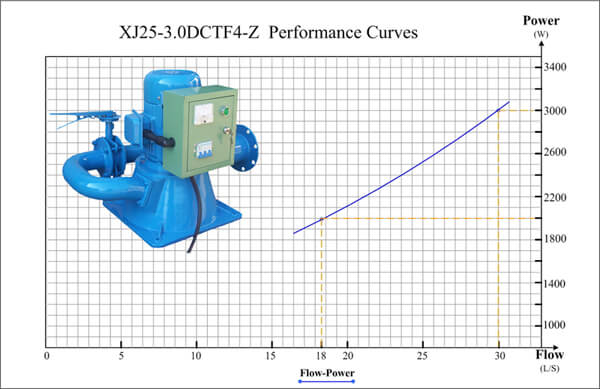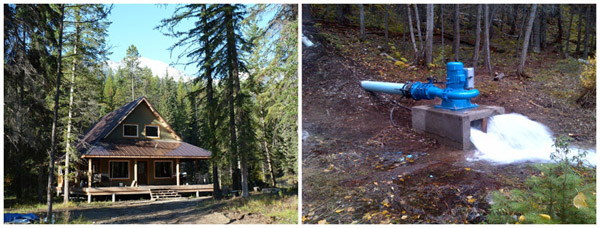Contents
- 1 How much hydropower could I generate from a hydro turbine?
- 1.1 Basics of a hydropower plant
- 1.2 What’s the power rating of a hydraulic turbine?
- 1.3 Hydro turbine power curve
- 1.4 Calculating power output of the hydro turbine
- 1.5 Head and flow rate
- 1.6 Power Rating vs Flow Rate
- 1.7 Power output vs. flow rate
- 1.8 Tips for getting maximum power from a hydro turbine
- 1.9 Hydro turbine power and environment
- 1.10 Choose the right hydro turbine
How much hydropower could I generate from a hydro turbine?

Basics of a hydropower plant
Are you planning to buy a hydro turbine? The first thing that you will think of is its power generation capacity. How much electricity can the turbine generate? Once you get this answer, you will decide whether to buy the turbine or not.
However, the power generation capacity of a hydro turbine is not the easiest thing to know.
This is because power output varies according to so many factors. The power generated by a hydro turbine depends on its power rating, flow rate, and head [potential energy] difference.
These factors vary from site to site. Therefore it’s hard to say how much power a hydro turbine can be expected to generate or how much power it can deliver.
What’s the power rating of a hydraulic turbine?
Most people would say that power rating is shown in power curves of each product produced by manufacturers such as Suneco, Hualiang and Sanyi, among other hydro turbine manufacturers. But these power curves show only maximum power ratings and are not real-life figures.
The maximum power output of a hydro turbine varies greatly according to flow rate and head [potential energy] difference (defined as pressure differences between water surface levels upstream and downstream).
Hydro turbine power curve

The power curve indicates the relation between power output and head for best efficiency; it doesn’t represent actual power generation capability in a real-world situation because many factors affect power generation capacity.
The power curve of a hydro turbine usually shows power output at 30-50m/s flow rate under normal head conditions. If the flow rate is low, power generation capacity will be affected, and actual power output will fall below the power curve.
On the other hand, if the flow rate is high, power generation capacity won’t change the power ratings can be exceeded.
In other words, power generation from a hydro turbine is directly proportional to water flow rate and inversely proportional to head [pressure] difference. Simply put, higher flow rates give higher power outputs while lower head differences reduce power output capability.
Calculating power output of the hydro turbine
So much for theory! Now let’s find out how much hydropower you can get from an existing or planned site. For ease of discussion, power generation capacity is measured in kilowatts (kW).
POWER OUTPUT = FLOW RATE x HEAD [PRESSURE] DIFFERENCE (m) x POWER RATING (kW)
Example: If a hydro turbine can generate 5.5 kW power at a flow rate of 10 m/s and a head difference of 300m at a power rating of 2.2 kW, it can generate 6.3 MW power under the same conditions with its power rating increased to 6 kW.
Head and flow rate
Hydropower generators are set up for certain flow rates and head differences. So power output from a hydropower station varies according to the above formula. Let’s see how power generation capacity will change if power ratings and flow rates are changed.
Example: If power rating becomes 8 kW at 2.2 kW power output at a flow rate of 10 m/s and head difference of 300m, power generation capacity will increase to 11.6 MW under the same conditions with its power rating increased to 6 kW.
Power Rating vs Flow Rate
If you have a site for a hydro project, it could be operated at various flow rates and heads [pressure] differences. If power ratings of a hydropower station are fixed at 2.5MVA, you’ll need to choose the combination of flow rate and head [pressure] difference that enables power ratings to fall within the limit set by power stations in question.
Power generation capacity varies greatly according to power rating and flow rates so it’s difficult to say how much power a turbine can generate if the power rating is fixed. However, power curves indicate how much power output will vary according to flow rates and heads.
At an average flow rate of 10m/s, this hydro generator has a power generation capacity of 8MW under normal head conditions, while at an average speed of 20m/s, its power generation capacity will be increased to 12MW.
Power output vs. flow rate
As power capacity is directly proportional to water flow, power ratings can only increase if the power generation capability of a hydropower station increases. But power ratings of hydropower stations are fixed.
So the increase in power output does not result from an increase in power ratings but rather from an increase in head difference (pressure difference).
In fact, it’s more effective to decrease pressure differences than increasing power rating for power generation as pressure differences determine power capacity – i.e., high pressures give higher power outputs while low pressures reduce power output capability.
If we assume that the average flow rate at your site is 10m/s and you have a hydro project with a sited power rating of 5MW, you’ll need to double power ratings for a power generation capacity of 10MW.
A power rating of 5MW can generate 5 x 10 = 50 MW power at an average flow rate of 20 m/s and a head difference of 150m.

In other words, if you want more power from a hydro turbine, you need to increase the head differences (pressure differences) rather than increase power ratings – and vice versa if you want less power from a certain hydro generator.
If your site has the potential to produce 20MW power but assumes that it has been produced already without being limited by a potential power station capacity, you may need the power rating and head difference of a power station to be increased.
However, power stations with power ratings of power stations will have certain flow rates and heads that can generate power – so power output is limited by those conditions.
Tips for getting maximum power from a hydro turbine
For the former, the power rating of a power station must be increased to increase power output – but power ratings are limited by structural and other limitations such as human power consumption while increasing power generation capacity must be based on the increase in head differences (pressure difference).
So it’s better to decrease pressure differences instead of increasing power ratings when you want more power from your hydropower station.
For the latter, if you expect your power usage is going to increase at some stage of operation, it may be wiser not to install maximum capacity turbines as they only have value for a certain period of time.
Hydro turbine power and environment
Hydro plant users should understand that even though hydropower is clean energy, its destructive nature to the environment can’t be overlooked.
For example, reservoirs are constructed to prevent power stations from being flooded and protect power station equipment. So, even as you focus on increasing the power output, do not ignore the impact that the system will have on the environment.
Choose the right hydro turbine
How much hydroelectric energy would you like to get? It all boils down to choosing the right hydro turbine for your specific application area.
Find out whether you need a 5kw 10kw or even 50mw hydro turbine for power generation.
The best hydro turbine manufacturer will ensure you get the right turbine for your application. You will then reap the full advantages of hydropower.

 By Suneco Hydro
By Suneco Hydro


